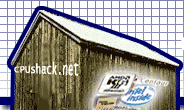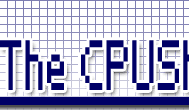


 |
 |
 |
| home | about | pictures | reference | trade | links |
SAN JOSE, Calif. - October 15, 1997- Today at the Microprocessor Forum, Sun Microsystems, Inc. will make a technology disclosure of its first JavaChipTM processor, the microJavaTM 701TM. The first in the microJava 700 series processors from Sun, the microJava 701 will be optimized for native JavaTM code execution while also supporting C/C++ code, thereby facilitating the industry's migration from C/C++ code to Java. Sun's internal preliminary benchmark results indicate that the microJava 701 should deliver 13,332 embedded Caffeinemarks as measured by the well-known CaffeineMark 3.0 benchmark and 200 Dhrystone MIPS on C programs as measured by the Dhrystone 2.1 MIPS benchmark.
An Overview of microJava 701 The microJava 701 is being designed to deliver the best price/performance ratio for the native execution of Java-centric applications. The microJava 701 will integrate system functionality on-chip, eliminating the need for external ASICs.
At the heart of microJava 701 will be an enhanced core, picoJavaTM 2.0. The second in a family of JavaChip cores from Sun, picoJavaTM 2.0 is a new high-performance core that will be optimized for native Java code execution, while providing solid C code execution. This bridge strategy is designed to meet the needs of wide-ranging applications transitioning from legacy code to a Java. The picoJava 2.0 microarchitecture will feature a six stage pipeline and extensive instruction folding. This instruction folding allows up to four instructions to be combined for execution in a single clock cycle, improving the performance of all types of code.
"Java is gaining unstoppable momentum throughout the industry, especially in emerging information access devices including consumer electronics, communications systems and industrial systems," said Raj Parekh, Vice President and General Manager of Sun Microelectronics' Volume Products Group. "Through both our designs and strategic relationships, we intend to offer an entire family of Java processors and licensable cores that address the price/performance needs of the emerging Java information appliance industry."
"We're encouraged by Sun's commitment to developing a family of picoJava cores," said Kozy Kubota, NEC Semiconductor Group. "The unveiling of picoJava 2 is a clear illustration of Sun's commitment to developing a range of scalable cores for the Java centric market."
"We stand to benefit from the technology resources Sun has put behind the picoJava 2 core," said Sun Choi, Managing Director, Media Processor Venture, L.G. Semicon.
With its superior performance of Java code, design flexibility, low system level cost and ability to execute C code, the microJava 701 is being designed to suit a range of high-volume, Java-centric applications in the enterprise, communications and consumer markets. The microJava 701 is aimed at early adopters in the Java market in the intranet and extranet arenas such as industrial automation, point-of-sale, terminal replacement and information kiosks.
The Technology Details The microJava 701 is being designed to allow developers to rapidly and cost-effectively develop systems. To this end, the memory controller and I/O bus controller are being integrated onto the device. This not only lowers overall system cost, but conserves power and increases reliability. The memory controller will offer the choice of a 32-bit or 64-bit wide data interface, and a choice between one or more cost-effective EDO DRAM or higher-performance SDRAM. It also supports SRAM, ROM and Flash memory. The PCI controller will be compliant with the 2.1 interface standard. In addition, a local bus supports low-cost 8/16/32-bit slave I/O peripherals.
The microJava 701 will utilize a 32-bit picoJava 2.0 core. It will contain both an Integer and Floating-point unit as well as 16KB instruction and 16KB data caches. The microJava 701 will be manufactured in a 0.25 micron CMOS process and has a target frequency of 200 MHz. The design is targeted to be fully static and use a 2.5 volt core and 3.3 volt I/O supply. Estimated power dissipation is about four watts assuming a 200 MHz core using a 33 MHz PCI bus and a 66 MHz memory bus. Die size is estimated at 50 square millimeters. Overall transistor count is estimated at 2.8 million. The chip will be packaged in a 316 pin plastic ball grid array (PBGA).
Availability Sun expects to be in volume production with the microJava 701 by the second half of `98. Details on pricing will be released closer to the time of availability.
About Sun Microsystems Since its inception in 1982, a singular vision, "The Network Is The ComputerTM" has propelled Sun Microsystems, Inc. (NASDAQ: SUNW) to its position as a leading provider of hardware, software and services for establishing enterprise-wide intranets and expanding the power of the Internet. With more than $8.5 billion in annual revenues, Sun can be found in more than 150 countries and on the World Wide Web at http://www.sun.com.